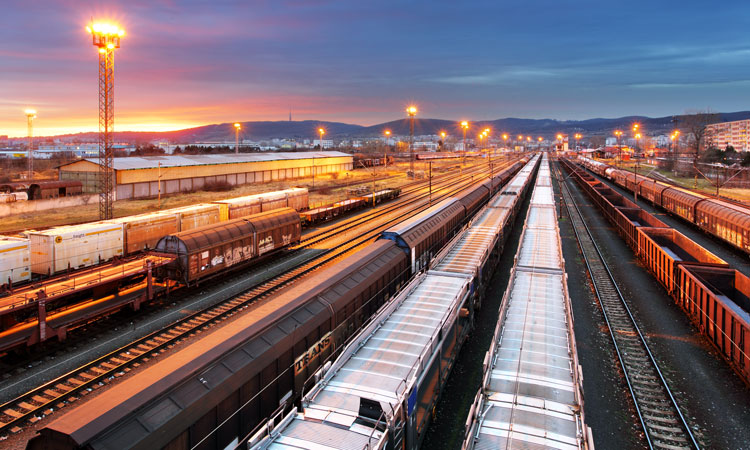Four benefits of data analytics for the safety-first modern railroad
Posted: 3 March 2020 | Hannah Pickering, Saurabh Kelkar | No comments yet
CloudMoyo’s Hannah Pickering and Saurabh Kelkar pick out four factors that are making the case for data analytics in a railroad’s safety journey.


A quick Google search will reveal a wealth of content around data and data analytics, covering everything from what it is to how to leverage it. Referring to the use of data to drive business strategies, improve performance, and provide better service to customers, the beauty of data analytics is that it provides many opportunities across sectors to leverage it. This includes the rail transportation sector.
Where data analytics comes into play for the modern railroad
We live in the information age, so it’s not surprising that railroads generate a large amount of data related to train arrival times, crew certifications and availability, operational testing results, and locomotive conditions. The sheer amount of this can be overwhelming, not to mention a burden if it’s not helping to inform decision-making.
Without advanced analytics, railroads cannot store or analyse their data to obtain valuable, actionable insights and competitive intelligence that’s going to help automate core processes and provide intimate viewpoints into the health of the enterprise – ultimately keeping your employees, your customers, the community, and the environment safe.
Analytics can not only help you make sense of your data; it can help you use it to make smarter decisions. With the Microsoft Azure stack (including the Data Lake and Azure Warehouse), you can take the large amounts of data your railroad generates and utilise the platform’s analytical systems to analyse large rows of data and interpret it through visually engaging Power BI dashboards.
The emerging role of data analytics for rail safety
There’s a saying that data is the new oil – for railroads in todays’ global transportation climate, data is quickly becoming the fuel for increased efficiencies and reduced safety risks, with advances like predictive maintenance helping railroads anticipate maintenance issues ahead of time, respond to potential safety concerns before an incident occurs, or identify potential safety opportunities by analysing trends and patterns in safety-related data.
There’s a saying that data is the new oil – for railroads in todays’ global transportation climate, data is quickly becoming the fuel for increased efficiencies and reduced safety risks
Today’s innovative railroads are directly benefiting from increasingly large amounts of data to better support their safety goals and their expectations for operational efficiency. In fact, in North America alone, the Association of American Railroads (AAR) has recognised the role that railroads’ annual investments to modernise and improve their networks have significantly contributed to rail freight’s strong safety record.
Data-driven railroads see data analytics as a tool to gain increased visibility into their data, a transformation from what has formerly been siloed data largely aggregated on paper in Excel spreadsheets. Instead of responding to accidents and incidents after they occur (and have incurred associated costs), railroads are implementing data-driven safety initiatives. This positions them to better identify room for improvement, and adjust organisational focuses agilely in accordance with safety goals.


Today’s innovative railroads are directly benefiting from increasingly large amounts of data to better support their safety goals and their expectations for operational efficiency.
Four benefits of data analytics to drive rail safety today
There are quite a few leading value-drivers of data analytics for railroads today, both in and out of the arena of safety. Here is four that are making the case for data analytics in a railroad’s safety journey:
- Intelligent testing
One significant benefit of data analytics for rail safety is the ability to conduct more intelligent testing. Advanced analytics, combined with AI and ML technologies, transform your data into a strategic asset. With these technologies, you can drill-down into safety data, identify opportunities for safety improvement, and make recommendations to ensure more effective testing. This empowers leadership to make better-informed decisions that will drive operational efficiency and safe operating practices simultaneously.
- Increased operational efficiencies
Simply exchanging manual, time-consuming processes for streamlined workflows is going to be a huge time saver. Not to mention, the risk of human-related error is much smaller. This frees up your time to focus on other tasks or projects that require more focus and hands-on management, or build a plan to respond to an increase of failure to test on a certain rule in a given area. With this, you can better avoid penalties and fines associated with violations, and ensure that your trains can be operated by crew who have passed all required tests and intuitively follow safe operating practices. You can also use data analytics to optimise not just your crew testing and inspection allocations, but also align your test programmes with the optimisation of crew scheduling and qualifications tracking.
- Increase ability to track operational metrics
Analysing data is just one step; data visualisation tools like Power BI and analytics dashboards go a step further to help you better understand and engage with your railroad’s real-time data, identify testing success and failure rates or what the top rules tested on are, and help you monitor safety parameters and performance in alignment with your organisational safety initiatives via measurable, trackable results. These same dashboards can be a life-saver when it comes to quick, accurate compliance reporting with near real-time data.
- Improved service
There are several ways that data analytics can help you improve your service for your employees, your customers, the community, and the environment. Operating safely without compromising efficiencies is the ideal that every railroad is working towards, and streamlining operations, along with reduced safety risks, ensure that your crew is able to operate safely and better provide your customers with the highest level of service.
Keys to making your data analytics plan successful
Translating the term ‘digitalisation’ from a concept to a plan, then to a strategy, then to concrete steps, takes time and resources. At all stages of this journey, it helps to step back and survey the track ahead as segments in the modernisation of your railroad.
First, any digital solution that you integrate into your enterprise should be scalable and able to adapt as your railroad grows and evolves. This is one of the most important features that a platform should offer, as it must adapt to business and industry changes to be successful.
Any digital solution that you integrate into your enterprise should be scalable and able to adapt as your railroad grows and evolves.
Secondly, what is critical to keep in mind as you adopt and implement safety-driving technologies is the importance of cultural change. Change management is essential to making this transformation successful and help you really leverage the benefits of data analytics. This involves making both the safety-first and digital-first approach a part of your company’s safety culture and corporate story.
This commitment to the power and impact of safety culture is present in the European Railway Safety Culture Declaration, which declares that “safety is the main driver of the efficiency and reliability of railway services…Individuals at all levels in our organisations take part in actively defining how to continuously develop, promote and regularly assess organisational principles and practices to foster a positive safety culture”.
How do you see your railroad harnessing the powerful opportunities that data analytics provide?












